13 Simple Steps to Improve Your Dogs Recall
One of the proudest moments I’ve had with my dog was having her to stop mid run and come back to me while she was chasing a rabbit. I was absolutely dumbfounded. My dog just stopped mid run and came back to me? Oh yes — it is possible.
We achieved it by consistently working on her recall over many months. My trick was to make sure I was always more interesting than her surroundings, so I became a constant supply of treats, games, and praise.
It wasn’t easy, and there were a lot of frustrating days, but seeing your dog stop mid run and come back to you enthusiastically made it all worth it. This post goes over some of the simple ways you can help improve your dog’s recall.
How to Improve Your Dogs Recall
Let me guess, your dog doesn’t always come when called? Or does your dog out the door as soon as it’s opened & run away? Does your dog take off and chase anything that moves? Trust me you’re not alone. It’s happened to all of us, and it can be really tough during a dogs rebellious adolescent stage.
If you want to train your dog to reliably come when called this post is for you, these 13 simple tips will help improve your dogs recall.
I Used to be “That” Person
We’ve all seen that person at the park yelling and screaming at their dog to come back, but have you ever thought about what that experience is like through their dog’s eyes? If I were that dog I’d much rather sniff that tree or roll in something smelly than come back to my angry, yelling owner. Frustration and yelling seems to come so naturally to us when our dog doesn’t listen. It doesn’t, however, do anything to entice our dogs to come back to us.
Eventually I figured out that my methods weren’t working. I started doing research on positive training methods and reward based training. I had to train myself to try new methods that were unfamiliar and learn more about dog behavior and motivation.
Why Recall Is So Challenging to Train
Your dog’s recall is arguably the most important command you can teach, but it can also be one of the hardest commands to get reliably. We set ourselves up for failure. By trying to be more interesting to our dog than that squirrel, and then punishing them when we do manage to get them back. If you were your dog what would you do next time? I’d chase the squirrel.
Chasing that squirrel is highly rewarding to your dog, especially if they’ve got a high prey drive. When you’re chasing after your dog yelling “come here” in a negative tone with extra expletives it’s no wonder they’re going to continue to chase rather than come back to you – the angry, yelling owner.
They’ll continue to chase and disobey if their distraction is more rewarding than what you have to offer. It’s always going to be funner to chase that squirrel rather then be put back on a leash and taken inside.
In order to get our dogs to come when called we need to make ourselves someone that’s consistently enjoyable to our dogs; someone that’s always worth running back to.
Overcoming the Extra Excitement
For many dogs going outside is their big “yippeeee” moment of the day; it’s their time to run around, play, and have fun. It’s pretty hard to compete with that, especially if they have pent up energy. Playing with your dog throughout the day helps them burn off some of that mental and physical energy and makes it easier for them to focus later on.
Avoid that instant excitement of going outdoors by playing with your dog beforehand. The more you actively play with your dog and engage them the more attentive they’ll be when it comes to training. It’s all part of establishing a strong bond with your dog.
The trick to training recall with your dog and making it reliable is to show them that they’re always making a positive choice when they come — and that takes a lot of practice.
Start in a low distraction environment such as your living room or garden. Don’t start your recall training where there’s a lot of distractions; you’d just be setting yourself up for failure.
When Training Recall Use Consistency & Be Patient
Consistency and patience are key when it comes to training a dog. When you begin teaching your dog to “come here” the rewards must be given readily and excitedly. Clearly communicate to your dog that coming to you was the best choice they’ve ever made.
Don’t rush out and try to train a new behavior in a 3 hour long session. Dog’s don’t have the longest attention spans so keep the training sessions short and sweet. If your dog starts to show signs of growing bored pack it in for the day and start again tomorrow.
You Might Not Get 100% Reliability – But You Can Get Close
It’s very difficult to achieve 100% reliability when it comes to your dogs recall. Not all dogs are as naturally willing to please, and some can are much more motivated to roam than others. Recall can be hard for certain dogs to master – it goes against their natural instinct to sniff, explore, or chase. Even the best trained dogs will find certain distractions more rewarding than their owners from time to time.
The more your practice using positive reinforcement and consistency, the more reliable your dogs recall will be. You know your dog best – when they make the right choice and come back to you make it worth their while with a high value treat or game. If your dog keeps receiving great benefits from obeying the “come here” command they’re much more likely to make that same rewarding choice in the future.
Knowing When to Leash Your Dog
Once you have a reliable recall you might be tempted to go leash free at all times. It can be quite exciting and liberating, and some of the best times are had off leash, but sometimes it’s not worth the risk.
No matter how well you think your dog is trained there are certain situations where your dog may take off. Some dogs will find chasing a rabbit irresistible, while some may take off after getting spooked by a motorcycle. If your dog always comes when called that’s great – but it doesn’t mean you should walk him down the road without a leash.
With enough practice you’ll be able to gauge your dogs personal distraction threshold and know when it’s better to keep them on lead rather than setting up an instance where they won’t listen or might run into an unsafe situation. If your unsure about your dogs reliability it’s always better to to keep them leashed to avoid potential dangers.
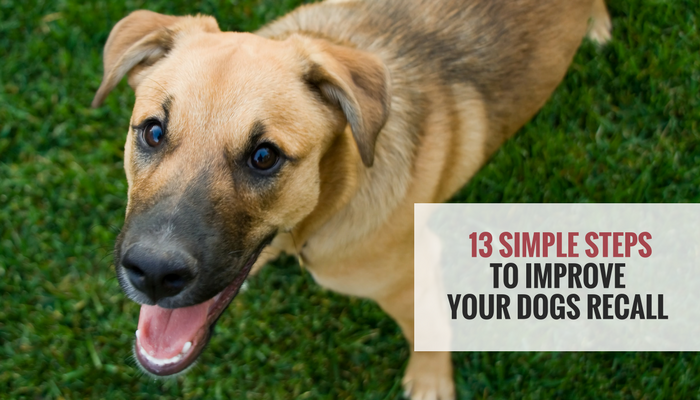
A reliable recall is one of the most important commands you can teach your dog.
1. Use One Command Only For Recall
Your dogs recall depends on your consistency, and the first step is coming up with a good recall cue.
If you want your dog to reliable come when called you need to stay consistent. The command you use to tell your dog to “come here” must only be associated with positive things. Every time they come back to you let them know that they made the best choice possible by rewarding them with a yummy treat or quick game.
This was by far my biggest challenge; it’s so natural to say “come here” any time you want your dogs attention. Even after months of training myself I’d still catch myself throwing around the “come here” command on accident.
Make sure you give them a decent reward when they come to you – they’ll begin to associate the “come here” command with good things. If you use the term “come here” for negative things such as bath time or getting their nails trimmed they’re less likely to obey when called since it’s been associated with things they don’t like. The term needs to be associated with great outcomes.
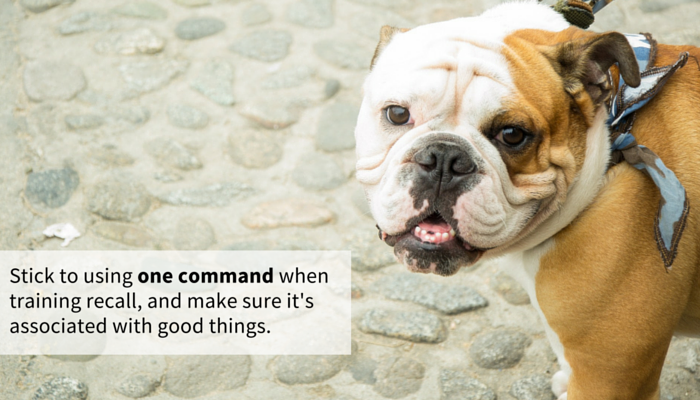
When training your dog to ‘come here’ make sure you stick with one command, and that it’s one associated with good things.
Switch The Command If It Becomes Unreliable or Tainted
If your “come here” command is tainted with negative associations such as bath time it’s time to think of another term to use for recall. Your dog’s either learned that the command “come here” is associated with a negative consequence, or they’ve learned they can get away with not listening to it.
I use “over here” since I was guilty of using “come here” for many bad experiences like leaving the park, bath time, nail trimmings, or going back inside during play time. It’s no wonder my dog wasn’t motivated to “come here” when I called, she knew it just meant we were going back inside.
2. Take Baby Steps When Training Recall
A good recall from your dog doesn’t happen overnight — a reliable recall is taught in small steps. You’ll want to start with short distances on a lead until you achieve a good recall. Once your dog is reliably coming when called increase the distance.
Eventually you’ll be able to add in distractions such as practicing outside around other people or dogs. And when it comes to training outside with your dog I highly recommend a long leash when starting out. It will give your dog enough freedom to make their own choices, but you’ll still have control if they decide to take off after a rabbit or any other distraction.
If you notice your dog not obeying at a certain distance or with distractions go back to your previous step and practice more — it just means your dog wasn’t quite ready to move on.
Like many great things a reliable recall is built over time, and will take many repititions. Don’t expect success overnight. If your dog won’t come to you in your own backyard they’re not ready to try the command at the park.
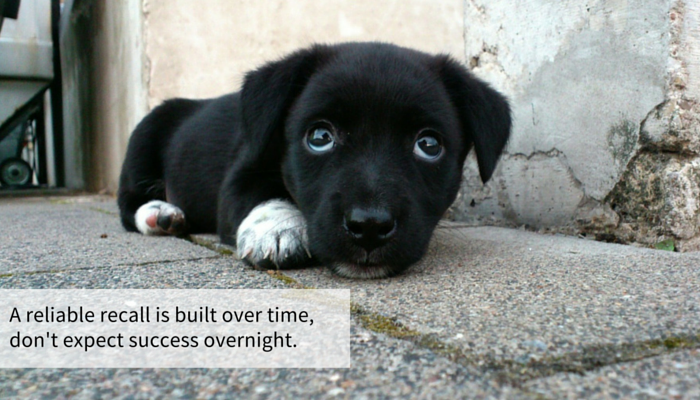
A reliable recall doesn’t happen overnight. Be patient & work one step at a time.
3. Be Consistent With Your Recall Command
Dogs are constantly learning from us whether we realize it or not, so it’s important to remember not to get lazy when it comes to giving out a great reward whenever they come on command. Even if they already know what “come here” means it’s important to keep rewarding them every time they come when called. If you don’t reward your dog they may decide that sniffing around in the yard is far more rewarding than coming back to you just to go back inside.
Dog’s learn well when they’re rewarded for making their own choices; when your dog recalls on command make sure they know that choice was the best decision they could have made. If you forget to praise them they might wonder whether they’ve done something wrong or just decide it’s simply not worth it to listen next time.
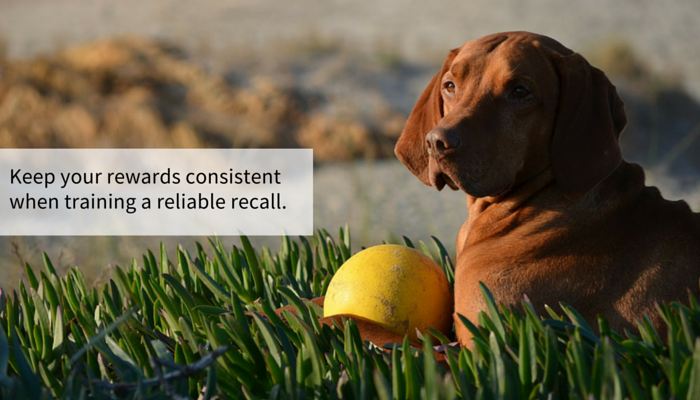
When training your dog to come to you remember to reward each step.
4. Make it Extra Rewarding When Your Dog Comes Back
This is by far one of the most important things to keep in mind when training recall with your dog. You need to make coming back to you the most exciting and rewarding thing possible.
As stated above getting your dog enthusiastic about coming back to you can make recall much easier to teach. We all like getting rewarded for our choices and dogs are no different. Using positive reinforcement during training is clearly communicating with your dog that they’ve done exactly what is expected of them. It also makes it much more likely that they’ll repeat the desired behavior with repeated training sessions.
There’s so many possibilities when it comes to rewards – it doesn’t just have to be treats. Dogs can be highly motivated by play so try a tug toy or lure if your dog likes to chase. If they go crazy for squeaky toys use those. I’ve used everything from frisbees to carrots.
You can make it extra rewarding by making a game out of it. Puppy in the middle is one of our favorite recall games; you and a partner practice calling your dog back and forth. Keep your dog interested by rewarding them handsomely with treats when they come. Step it up a notch by adding in a tennis ball and encourage them to join in. It’s an easy way to practice a reliable recall with multiple members of the family.
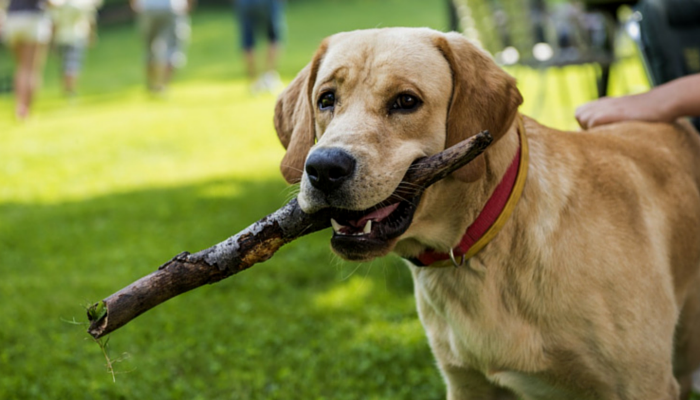
Switch up the rewards to keep it interesting for your dog. Instead of just using the same old treats try playing a nice game of tug. My dog is more play driven than food driven in most instances.
5. Start Rewarding Your Dog Before They Reach You
Whether you’re using a clicker or verbal praise, another way to improve your dogs recall is by letting your dog know they’re on the right track as they’re heading back you. If you wait to show any sign of positive reinforcement until they’re completely back to you they’re more likely to become distracted along the way. This is especially true when working with distractions or at long distances.
I personally prefer a clicker because it enables you to respond at the exact moment your dog does the desired behavior with a distinct sound. Sometimes I found myself praising my dog with all sorts of words as she was coming back and eventually I could the positive effect of verbal praise being diminished. If you talk to your dog a lot you might find the same is true – our words can mean less if we overuse them.
6. Change Up The Reward to Keep it Interesting for Your Dog
If you want your dog to reliably come when called it’s important to keep things interesting and fun for them.
If your only reward is exactly the same each time you perform a certain action it just becomes expected. Sure it’s still nice but it’s not very exciting after awhile. Your dogs recall command is challenging to teach, the stakes are high, so the reinforcement needs to be exciting. Keep your rewards for your dogs recall interesting by changing them up. Use treats, toys, and games. There’s going to be an extra level of enthusiasm and excitement from your dog as they’re coming back to you if they don’t know whats coming.
When training a puppy the “chase me” game is especially fun. As they’re heading back to you verbally praise them and try to coax them into chasing you. You know your dog best, use the higher value rewards when working with new distractions or from a further distance.
Any toys that you designate as training tools should be kept separate and out of reach from your dog. Dogs can easily become bored with toys if they’re given access to the same ones all the time – only use your high value training toys or treats when you’re actually training.
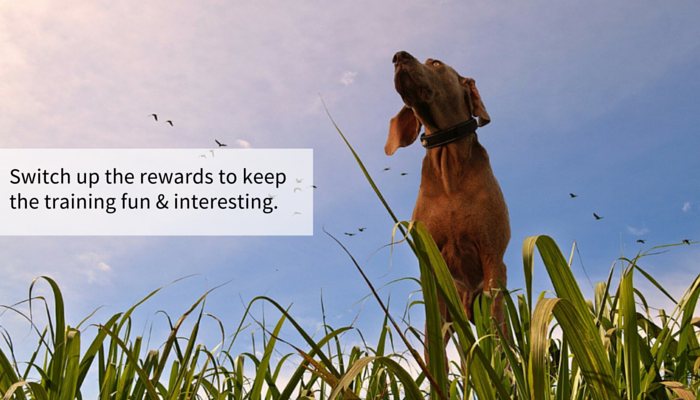
You can keep your dog interested in training by switching up the rewards.
7. Make the Release it’s Own Reward
When it comes to training your dog to come when called it’s important to remember to keep it fun. And one of the easiest ways to do that is to make your dog’s release it’s own reward.
If your dog was in the middle of doing something fun before you had him come to you give him his reward and then allow them to go back to what they were doing. For this to work you should have a release command such as “OK go.” Something to signify the dog is free to go back to whatever it is they fancy.
This works well when there’s many distractions around – give your dog a yummy treat for obeying and then give them the cue that it’s OK to go back to what they were doing. Chances are if you’re somewhere exciting going back to playing is going to be more rewarding than what you were going to offer anyways. They’ll associate the freedom of the release as a positive consequence.
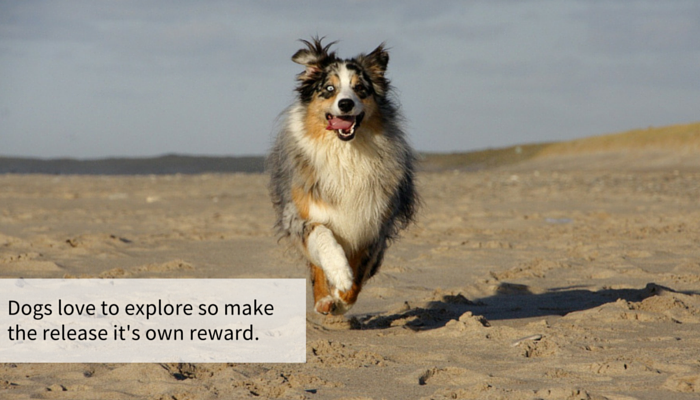
Sometimes the best reward you can give your dog is to let them explore.
8. Don’t Assume Your Puppy is Too Young to Learn
When it comes to teaching your dog to “come here” don’t assume your dog is too young to learn. You can set a decent foundation by teaching your young pup that coming over to you equals all sorts of good and fun things. That positive association will help set the groundwork for your dogs recall later on.
Puppies grow up following their litter mates around. They learn by example, and following around other members of the family comes naturally to them. Teaching a young puppy to come here is generally pretty easy using positive reinforcement.
Puppies love to follow moving objects so teaching them to come to you while you’re running around can be accomplished quite easily. If you can lay the foundation of a great recall with a young puppy it will be tremendously helpful for when they reach their rebellious teenage phase. You can teach a dog recall at any age – it’s often easier to accomplish when started at a young age.
Lying a good foundation when your dog is young will help out in the long run. It builds a stronger bond between you and your puppy, and it helps build up their focus and impulse control.
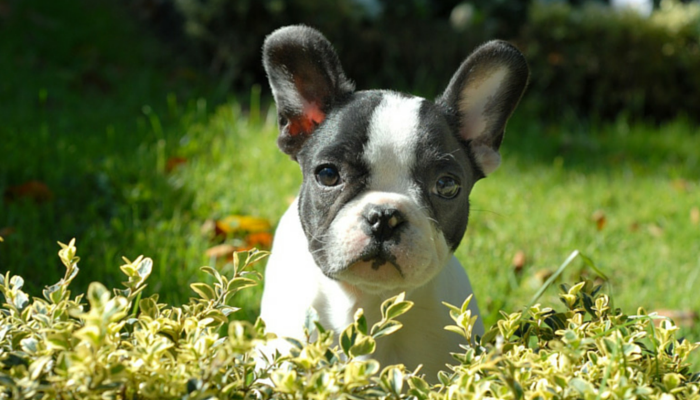
Training your dogs recall is one of the first behaviors you should work on. Don’t act upset or punish him when he doesn’t come when called. If he learns that he’ll be punished when he finally does come he’ll be less likely to obey the next time.
9. Don’t Set Your Dog up for Failure
When it comes to your dogs recall remember to give them some choices, but not too many to avoid setting them up for failure. If you can’t reliably get your dog to come to you from 5 feet away at home don’t try it at the dog park. Success comes in small steps and your dog needs to be trained in many different situations before you can expect them to come to you in a highly stimulating environment.
If you do find that your dog is not listening go and retrieve them – don’t yell or make it stressful on your dog – just put them back on the leash and remove them from the distraction. Your dog needs to realize that not coming when called isn’t an option without being overly harsh.
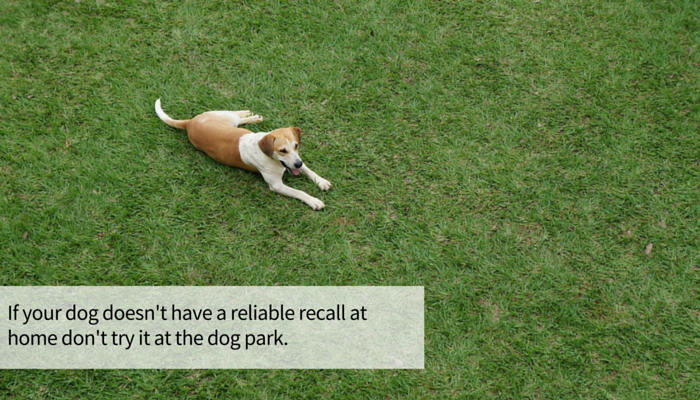
Don’t set your dog up to fail. If your dog doesn’t have a reliable recall at home don’t try it at the dog park.
10. Don’t Keep Repeating Yourself
Only use your recall command once, maybe twice. Don’t keep repeating it. If your dog is ignoring you they’re going to associate not listening as an option to keep on doing whatever they’re doing.
It will reinforce “selective hearing” and you’ll end up with a much less reliable recall in the long run. If your dog isn’t listening it’s time to stop the training – the dog is either too distracted, bored with training, or wasn’t ready for that level of training yet.
11. Get Your Friends or Family To Help
Getting other people involved is a great way to enforce positive behaviors. Have everyone in the family practice the recall command. Everyone should use the same positive training methods to maintain consistency.
I’ve seen some families where it’s obvious the dog only listens to one person. Everyone in your family should give a few minutes of their day to actively work on training the dog. As long as it remains positive and consistent you should begin to notice your dog will start to reliably listen to every family member.
Use your friends and family as distractions. After you have a reliable recall when it’s just you and the dog add in one distraction at a time. Up the ante depending on how well your dog has been doing in their environment – if they’re doing well with people around have your friend run around as a distraction or have them grab a toy. Training near distractions is often quite challenging – use a friend to your advantage by keeping the situation under control while they create distractions.
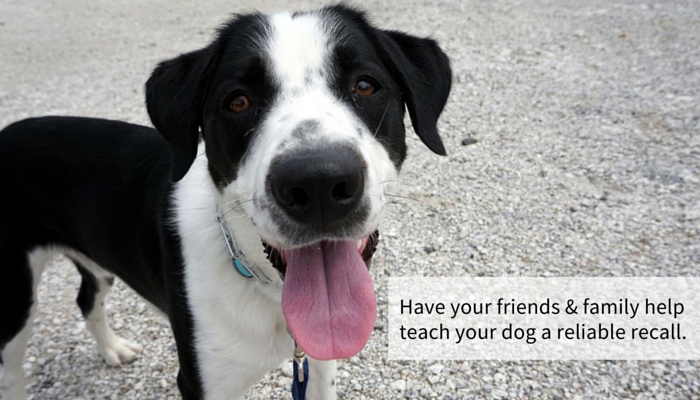
Enlist your friends & family to help train a reliable recall. They can help teach your dog to stay focused around distractions.
12. Don’t Punish Your Dog When They Fail
If your dog comes back to you after they’ve been naughty it’s pretty hard to stay calm and relaxed. But if you give in to your anger and yell or scold your dog they’re going to associate coming back to you with a negative consequence. Sometimes failures will happen and that’s OK. Just make sure you don’t end a training session with punishment after failure. It’s best to just pick up and go do something else.
Dogs that are trained with negative consequences or punishment get stressed out which can lead to other behavioral issues such as fearfulness or aggression. The extra stress can interfere with their further training and ability to learn new behaviors.
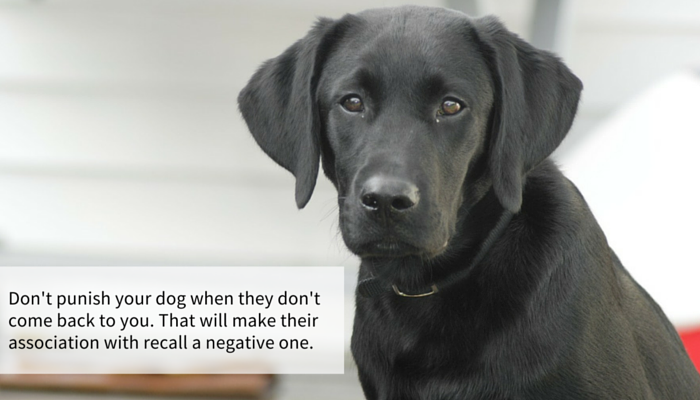
Don’t punish your dog when they don’t come back to you. Using punishment will only make your dog associate ‘come here’ with negative things.
13. Stop Training When Your Dog Loses Interest
Some dogs love training, but even the most enthusiastic learners do best with breaks. 10-15 minute sessions should be sufficient for most dogs. If you go on much longer than that you run the risk of your dog becoming bored or distracted. Keep it short and sweet by ending on a high note so they’ll look forward to the next session.
How Did You Teach Your Dog a Reliable Recall?
Realizing that all dogs are individuals I’m sure we’ve each encountered our own obstacles when it comes to training a reliable recall. What works for you and your dog? How did you teach your dog to come when called? Do you have any proud moments of your dog coming back unexpectedly? I’ve had a few really proud moments with Laika’s recall, but as with most training it took a lot of patience and consistency.
It really is the best feeling in the world when you see the success of your hard work paying off right in front of you – running and wagging her tail enthusiastically the whole way back to you.
Further Reading On Training Your Dogs Recall Command
- Teaching your dog to “come when called” by Dr. Sophia Yin
- Gotta Love That Recall by Patricia McConnell
- Teaching a Reliable Recall by Whole Dog Journal
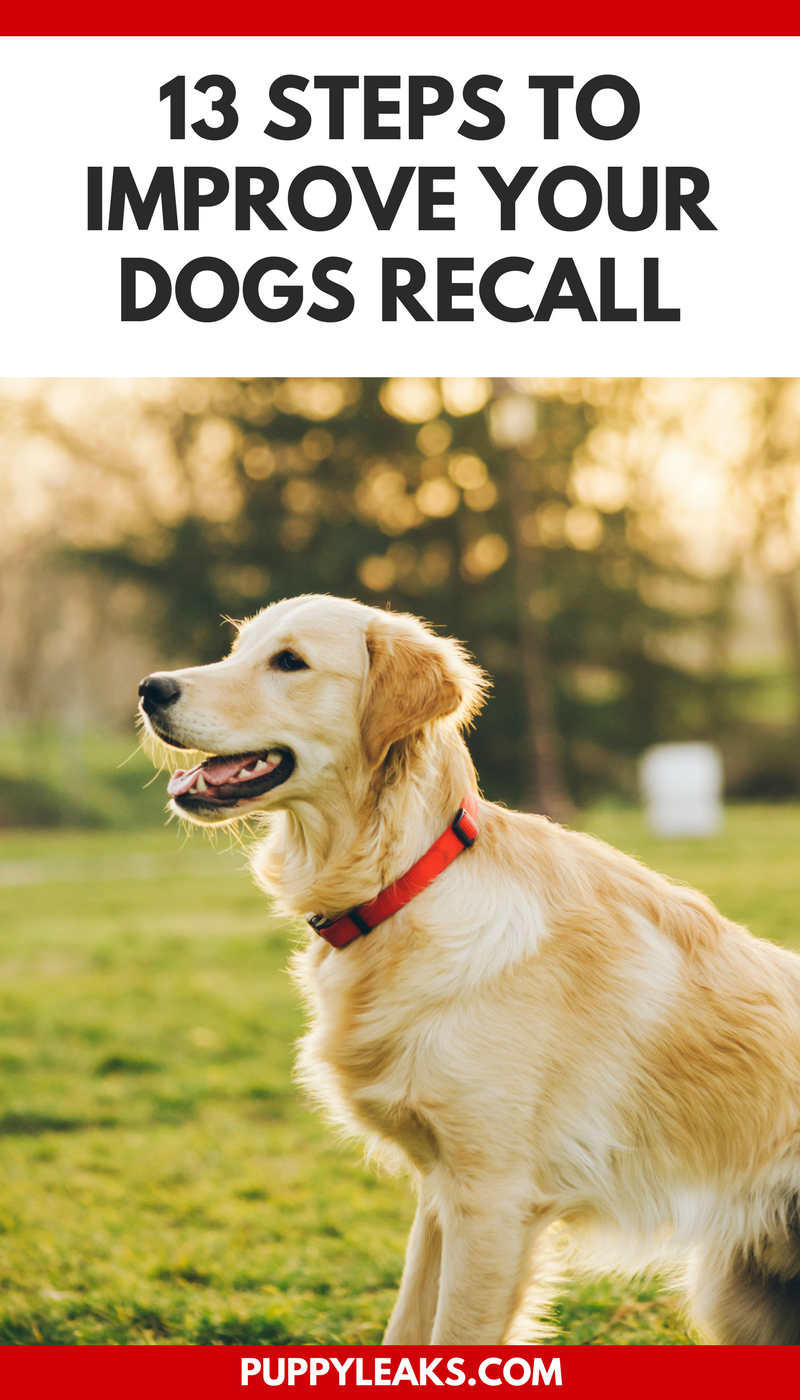
Please share with your friends.
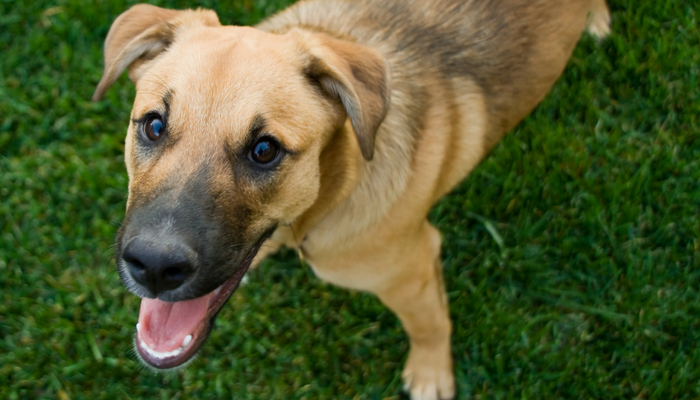

Love this!
Great guide, now if I can just train the trainer to follow it 😉
I know, it’s so much easier said than done. Training myself to stop using the term for everything was my biggest challenge.
Such great tips! It really is a wonderful feeling when you can call off a dog from chasing a squirrel or something they really go after. Occasionally I give Haley a good treat for just coming in from outside when I call her and she still LOVES playing hide and seek in the house (where I hide and call her, then she gets a treat when she finds me). Keeping it fun and interesting helps a lot.
I love that feeling – and I’ve found if I keep it interesting and fun my dog stays enthusiastic which makes it feel like a game.
I love step by step instructions. Our “come” was tainted many years ago. It’s time we old dogs learned new tricks! Thanks for the encouragement and clarity.
Great list of tips! Consistency is my downfall. Since I rarely let rita off leash anymore, I’ve gotten lazy about keeping up with her recall training. Plus I’ve ruined the word come. Need to start again with a new word. A gal at the dog beach we used to go to had great recall with her dogs using the word zucchini!
Zucchini? I love it. It’s really hard not to taint the word, that was the hardest part for me. Remembering to stick to one command only and make sure I wasn’t using it for everything.
This was a great post. I have done several posts on recall, due to the fact that huskies are notorious escape artists. I am not sure some people just how good a recall will come in handy at a time of need!!
ღ husky hugz ღ frum our pack at Love is being owned by a husky!
When I was writing the part about not all doings being so eager to please and a bit tougher to train I had you in mind. I’ve never trained a Husky before but I know they’re notorious for escaping so I wondered if recall was something you have to work on all the time.
My Husky would usually come running to me on recall of “come come” or a special whistle I did or simply a come here gesture if he was looking at me. Now I have a Border Collie. No easier to train than Kanook was.
Two months later and I’ve been battling with Casey refusing to leave the dog parks. Sometimes the only way I can draw her to me is by leaving the park, going to a grocery store and buying some Buddigs corned beef. She’s a hard headed Border Collie!
Sorry to hear that it’s still such a struggle. The funny thing is if you were to ask people I bet most would say “Huskies are more difficult to train.” Just proves you never really know, all dogs have their own personalities. Does Casey have a game like tug that she’ll go nuts for? I’ve gotten my dog to pay attention to me in distracting environments (though not quite as distracting as a dog park) by using tug, but that only works because it’s her absolute favorite thing in the world.
My dogs come…when they want to. : )
I’ve experienced that in the past many times 🙂
Those are great tips and recall is so very important!
We’ve been clicker training with our almost 1 year old pup, and you are so right that it is so rewarding when they actually do something you’ve taught them, at a time when you’re not actually training. Luke has a long way to go yet, but there are times he is spot on and it’s so exciting! He got out the door the other day and started running around the driveway, but actually came to me when I called. I was just so happy (and it was a big relief too)!
It’s just the best feeling in the world, I love it 🙂 I’m glad to hear Luke is doing so well – it’s really impressive given his age, we didn’t achieve a reliable recall til much later.
Yeah I want to start teaching my dog to come to me. I’ll be saying “recall” since it’s not a commonly used word. I’m planning on starting to use it for activities he already comes to me for, like a walk or playing outside. Also, when I am playing fetch with him outside, I want to train him to come to me with the ball so I can throw it again. And so I’ll use “recall” then too. But not to go back in the house ? I think this method will work well for the early stages.
Good tips, but our hunting dogs will not break off chasing a flushed bird for a treat. Just not gonna happen. We use e-collar to reinforce and we train it all the time. All the time. When we were at the Hillmann seminar in May one of the tips he gave was not to reward a dog with praise while they were returning with a retrieve because over the years he observed that the dogs tended to slow down on their return. They wanted the praise and made it last. He suggested waiting until the dog was right in front of you, and then turn on the praise. We tried it and that does work. Of course the dogs already have a somewhat reliable recall.
That is very interesting about the differences when calling them back. I’ve always had luck praising while approaching but I haven’t paid much attention to speed – I’m definitely going to try it out with Laika (although she’s a sample size of one).
Thanks for posting all this great advice, I know my Mum wants to work on this, I can see lots of treats in my future! 🙂
I hope you’re having a fun day,
Your pal Snoopy 🙂
GREAT tips! I just wrote about training the recall today on my blog after witnessing a man trying to get his dogs back after they broke out of their fenced-in area.
My own dog is very easy to train because he is so toy, treat and praise motivated. Plus, he naturally sticks close. I fostered an American Eskimo a few years ago who I would never trust off leash because he just totally ignored me outside. I worked with him on a long lead and had to “reel him in” every single time. He was perfect during our indoor obedience classes however and got his CGC. But in “real life”? Always ignored me 🙂
I personally haven’t had any experience with ant Spitz type breeds when it comes to training. From what I’ve seen they tend to think for themselves quite a bit in our training classes.. Makes me grateful that like your dog mine is pretty eager to please and easily motivated.
Love these tips! We often forget that instinct over-rides training, so we have to work to reverse this by making training more fun and interesting than instinctual attractions. It’s not easy, but can be done with all the great tips!
A trainer suggested something else. Reserve one special cue for those “this is an emergency and I need you to come to me right away to avoid injury or death” moments. Practice this cue with really amazing treats (we’ve used chicken breast) and never use it for routine recalls.
Our cue is “home plate.” And I hope I never have to use it.
Thanks for this article! Very helpful! I just finished an article for my new blog on training a reliable recall, and I linked to your article for further reading. Thanks again! http://dogsdigdirt.com/reliable-recall/
I love these tips and plan on reinforcing our recall, it’s thrilling when we can call them off something. One of the reasons Delilah is rarely off leash is her unreliability. Some things are just more thrilling than me. LOL
This is such a terrific explanation of how to get a reliable recall!! I don’t think people realize how much work and time it takes to have these incredible dogs that are so well trained. Great Job!!
My dog Mikko is a perfect example of “You Might Not Get 100% Reliability – But You Can Get Close”. We have been working with Mikko for at least 4 years now, including attending Sue’s Instant recall workshop at least twice. The workshop was excellent and taught me a lot! We have pretty big forest on our property. The forest backs on to at 4 neighbours who all have dogs. Mikko likes to take off through the trees and visit. When he comes back he is so happy and so proud of himself. We usually do not let him out of the fenced in yard. 9 times out of 10 when we let him off leash in the unfenced areas he will stay with us. But then the 10th time he will give us that look of “I’m going off on an adventure” and takes off into the forest. Before working on the recall we would have to drive around looking for him and bring him back home. After working on the recall for about 2 years he would come back about 10-15 minutes after being called. The last time he took off was about a week ago and he came back 3-4 minutes after being called. He came back happy and excited and we gave him lots of praise, lots of treats and played with him in the fenced yard. We will keep him on leash in the unfenced yard before giving him more freedom again. You may ask, why not just always keep him on a leash. Well, he is not usually out alone but he has jumped/climbed the fence before. Also, I cannot guarantee that we will never let go of the leash bringing him to and from the car. I would rather know that I can call him and he will come back then have him go off and possibly make it out to a road. Fortunately, he is more interested in being with people than with other dogs so after the initial excitement wears off of greeting another dog wears off he wants to be with us. Our instincts are still to scold him for taking off but instead we praise him and reward him for coming back. I agree with Sue that working on the recall is the most important skill for us to work on with Mikko. Recall is ongoing and never ending. We can never just sit back and say, Mikko has that skill and move on. So, we constantly train and play games that reinforce the recall. (Still working on the instant).
Gail
Sounds like he has an impressive recall. And I know what you mean about having those instincts to scold when they do eventually come back (that was the norm when I was growing up). And I do remember using my angry voice at my Lab growing up when he wouldn’t come back right away, and guess what? He had a pretty lousy recall, no wonder he never wanted to come back to me if he knew it was just going to lead to me being angry and immediately taking him inside away from his fun adventures.
To clarify, “Sue” in my response above is Sue Alexander at Dogs In The Park in Guelph where I found the link to this site.
Great post!
Here is my blog post on a recall game for your dog/puppy:
https://myschnauzeraddiction.blogspot.com/2017/04/quick-simple-fun-way-to-teach-come.html
In your article you said recall shouldn’t be used for getting their attention to do things they don’t like, like coming in from outside, baths, nail clippings, going in their crate, etc. So then how would you suggest I get my dog’s attention when these things need to happen? Or should I call him, offer treat and praise, then get down to the task at hand?
I try to avoid using “come here” for bad stuff, though I have to admit it’s not the end of the world if you do and it’s the part I still struggle with the most since it’s such a hard habit to break out of (I still use it a few times a week when it’s time to trim Laika’s nails; it’s a hard habit to break). The most important thing is making sure your dog doesn’t start to associate “come here” with more bad things than good, or that you don’t use it in a negative way itself i.e. yelling at your dog to “come here” over and over again when you’re outside. As you mentioned you can help counteract those negative associations with unpleasant things such as bath time by using treats and/or praise and trying to keep the experience as pleasant as possible.
(yelling “come here” repeatedly at when a dog doesn’t come inside is a good example of what not to do)
I have a King Charles Cavelier called Louie. I started calling him in from the garden (at 8 weeks) and giving him a treat immediately, from his treat tin. He will come in every time knowing he will get a treat. His recall, when out, is 99% great too. Friends in the park are gobsmacked when I call him, and I’m so proud too. He’s 5 months now. Great advice & tips.
I want to start teaching my dog to come to me. I’ll be saying “recall” since it’s not a commonly used word. I’m planning on starting to use it for activities he already comes to me for, like a walk or playing outside. Also, when I am playing fetch with him outside, I want to train him to come to me with the ball so I can throw it again. And so I’ll use “recall” then too. But not to go back in the house ? I think this method will work well for the early stages.
I have two 10-yr old pups, a Boston Terrier (got her at 9-wks), and a “Chi-Pin” (Chihuahua/Min-Pin, rescued her at 18-mos). I had begun puppy obedience training with Maggie Mae (Bostie), though had become quite ill for several months and was not able to continue. I never started up with her again. When Maggie was about 20-mos, Daisy (Chi) joined our family from a rescue shelter. She was so skittish, I feared training would overwhelm her and cause regression. So I just let “Daisy be Daisy”. So now they’re both 10, and it may sound crazy, though I want to train recall. Maggie is more stubborn than you can imagine. I actually tested her hearing, thinking maybe she was deaf, and not just ignoring me! Though I better understand now, at least a piece of why she chooses to continue doing whatever it is she is doing. She probably had begun to think her name was “Get Over Here” (in not such a nice tone)! And Daisy, she just does her own thing- can be a sneaky little fox sometimes and just disappear in the blink of an eye. Once she’s gone off, she’s gone. Is it too late to start training recall with my girls? If it is not, I do realize it may take many added layers if patience, given their ages and lack of prior training. One if your earlier posters used “come come” for recall- I like this idea. Do I use their names with the recall, individually or also when they are together? Thank you for the wonderful article. I’ve been very lost as to where to begin- and this provided an excellent starting place!
As far as whether or not you should use their names or not depends on whether or not it still works at getting their attention. If you just state their name do they immediately look to you to see what you want? If they do I don’t see any problem with using them. My previous dog Carter was oblivious when I used his name outdoors, so I had to get in the habit of not using it before I asked him to come back. Laika on the other hand always looks my way when I call her name, so I still use it before the command.
So if you don’t use the “come” command to get them to you to do things like come inside, leave the dog park, take a bath, etc. so as to avoid negative assiciations how do you get them to come to you in those instances? Do you have a separate command? Do you go to them?
Thanks!
I do use a different command if the dog doesn’t “come here” reliably; I’ve used “to me” and “here” as alternatives.
This is a terrific article. I had picked up most of these ideas over time and from a variety of sources. It was wonderful to have them all in one user-friendly article. The special command that really means come/comeNOW/come from whatever else you’re doing was really important. I used the word Treat! because I knew that’s what I would be giving him (a food-motivated Golden) and I knew I wasn’t going to be shouting that word in any other context. The end result is that, for the last eight years, every time my Golden comes back in the house, he expects a treat. But that’s okay. Unfortunately, a dog-walking companion uses Treat! to call her dog and doesn’t always reward her when she comes; but my dog is sitting there in full compliance, even when he was there all along. Haha.
I am sharing your excellent article with friends and family. The comments section is also a good read.
I guess I should add that my Golden was also taught “Come” and the hand signal for “Come” to which he responds well. I only use Treat! if the recall must not fail!
So if you use the “clicker method” to train for recall. Are you committed to using a clicker for the life of your dog
Choose a quiet area away from distractions. Put your dog on a short lead, call his name and give him his preferred reward and plenty of praise as soon as he comes.
Hi,
Thank you so much for this guide! My one year old border collie had a very good recall until recently where she decided all she wanted to do was go and play with other dogs (which was fine) until when I called her back she seemed to go deaf to every command (of course). So I was looking for ways to get her recall back and I stumbled across this article. I then took a long training line, some squares of cheese (which she loves) and my whistle and went to the park with her. She was doing so well so I let her of the training line and she carried on perfectly. Then she met this dog who she decided she thought was the best play mate she had ever come across so when the dog and its owner went to the other side of the park she promptly ran over to them. My heart sank, I thought oh great here we go again, Then she came away from the dog and said hello to some people. I called her using my voice command ‘come come’ and her whistle and she sprinted across the park so fast I couldn’t believe it until she came and sat at my feet with an expectant look. I was so proud, yes she had gone to the other dogs and people but she came straight back when I called her! Obviously Im sure this isn’t the perfect ending, we are of course going to have more blips etc but this is definitely big progress for my wee Sylvie. So, I just wanted to thank you for your tips.
Rosie & Sylvie x
Ps. The positive voice also came in really handy!
Very interesting & informative article! Thanks for sharing it with us.
Also, read this article: https://www.boredcesar.com/incredible-things-you-can-learn-from-your-dog/
Thank you for sharing. I guess my “come here” must have had a negative impact for my dog. It’s very difficult to recall my dog. It usually takes a long time to chase him to stop. I hope my dog will make me proud after your method.
Well, I’ve got three dogs and I’ve got recall sorted with two of them but the third dog is having none of it. I’m putting it down to selective hearing as you mention in point 10 but I’ll persevere.